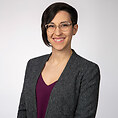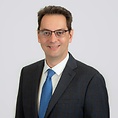FCC Proposes Rules to Enable Wireless Communications for Uncrewed Aircraft Systems
(This post was updated to reflect Federal Register publication of the NPRM.)
On January 4, 2022, the Federal Communications Commission (FCC or Commission) released a Notice of Proposed Rulemaking (NPRM). The NPRM seeks comment on proposed rules to enable wireless communications for unmanned1 aircraft system (UAS) use of the 5030-5091 MHz band (the C-band), alongside other UAS-related spectrum issues. The NPRM launches a proceeding that stakeholders across the UAS industry have supported for several years. Of note, the FCC proposes to accommodate both networked (beyond line-of-sight) and non-networked (line-of-sight) UAS command and control communications in the C-band, to utilize a dynamic frequency management system for the non-networked spectrum, and to enable non-networked operations to be licensed by rule. As for non-C-band-related issues, the Commission seeks comment on the feasibility of making flexible use spectrum bands and certain aeronautical mobile bands (117.975 MHz -137 MHz) available for UAS communications.
The NPRM tees up numerous questions related to these proposals, and affords UAS stakeholders an important opportunity to inform the FCC about the spectrum needs of the industry and the regulatory frameworks that will best enable operators to make use of that spectrum. Comments are due March 9, 2023, and reply comments are due on April 10, 2023.
The NPRM seeks comment on proposed C-band rules for drone command and control.
The C-band has been allocated to aeronautical mobile route (R) service in the U.S. since 2017, consistent with a global allocation to support line-of-sight command and control links for UAS. However, the absence of FCC licensing and service rules in the band has, to date, made the spectrum unusable for this application.
The NPRM seeks to rectify that gap, proposing a band plan and operational rules for the C-band to enable UAS communications. The NPRM focuses on two broad UAS use cases: (1) Non-Networked Access (NNA) for “spectrum or licenses (e.g., NNA blocks) that would be governed by service rules appropriate to support non-networked communications,” and (2) Network-Supported Service (NSS) for “spectrum or licenses [that] would be governed by service rules appropriate to support the provision of network-based services.” NNA access would typically occur within radio line-of-sight, while NSS would go beyond line-of-sight.
Band Plan. The Commission seeks comment on its proposal to partition the band between NNA, NSS, and other uses. The Commission proposes to dedicate (1) at least 10 MHz of spectrum for NNA operations, with 5 megahertz blocks at the bottom (5030-5035 MHz) and top (5086-5091 MHz) of the C-band; and (2) 40 MHz of spectrum for NSS operations, divided by 5-10 MHz, 10 MHz, or other “appropriate” size blocks. The Commission also seeks comment on whether to implement fixed guard bands on one or both ends of the band and whether to make remaining spectrum available for “multi-purpose uses” for both NNA and NSS use, or for increased NNA operations.

The FCC’s Proposed Band Plan for the UAS C-band
Dynamic Frequency Management Systems. The Commission proposes that access to NNA spectrum in the C-band be managed by “one or more dynamic frequency management systems (DFMS)” that determine and assign temporary use of certain frequencies for a particular geographic area and time period tailored to the operator’s submitted flight plan through an automated process. NSS licensees would be responsible for their own spectrum use and coordination in the C-band. The NPRM seeks comment about various implementation details related to using DFMS in the band.
Scope of Permissible Services. The Commission seeks comment on whether to permit only control-and-non-payload communications (CNPC) in the C-band, or whether to restrict communications to a subset of CNPC. The NPRM proposes a few different definitions of CNPC, including defining CNPC as “any UAS transmission that is sent to or from the UA component of the UAS and that supports the safety or regularity of the UA’s flight”—or, alternatively—“any communications to or from a UA other than payload communications, and to define payload as information sent to achieve mission objectives.” The Commission asks whether to restrict NNA to CNPC, but allow NSS licensees a broader scope, such as permitting UAS payload communications or both UAS and non-UAS communications. To this end, the Commission seeks comment on whether a broader scope of NSS service is required to provide the necessary financial incentives to facilitate network buildout for NSS spectrum.
NNA Service Rules. The Commission seeks comment on adopting a licensed-by-rule authorization for aircraft and ground stations in the C-band. The NPRM explains that under this approach, parties using rule-compliant stations and operating in compliance with the rules would need only to obtain the requisite temporary frequency assignment from the DFMS in order to transmit in the band in the requested location, frequency, and timeframe. The Commission also seeks comment on technical requirements for NNA operations, including whether to require that a DFMS can communicate with UAS equipment or other requirements to ensure interoperability between NNA and NSS network services.
NSS Service Rules. The Commission seeks comment on issuing exclusive use, geographic area defined licenses for a specific term of years, with rights of renewal, subject to specific performance obligations for NSS operations. The Commission asks whether NSS licensees should be limited on the amount of NSS spectrum they can aggregate and proposes a 20 MHz limit. The Commission also asks what type of operations commenters anticipate that NSS licenses will be used for and what technical rules will promote efficient use of the spectrum.
Satellite Issues. The Commission seeks comment on whether to authorize NSS licensees to provide network-supported service for UAS CNPC through either a satellite or terrestrial network, or whether the Commission should provide that certain NSS licenses are dedicated exclusively to satellite-based service. Further, the Commission seeks comment on whether to permit NSS licensees to deploy High-altitude Platform Stations.
Equipment Authorization. The Commission seeks comment on imposing equipment authorization requirements, like those in 47 CFR §§ 87.145(a), 87.147(d), for equipment intended to be used in the C-band.
The NPRM seeks comment on whether and how to make flexible use spectrum usable by drones.
The Commission seeks comment on the efficacy of the FCC’s current flexible-use rules to ensure the co-existence of existing terrestrial wireless networks and UAS because the Commission’s terrestrial mobile service rules generally do not consider airborne use. “Flexible use” refers to a license category that does not require specific uses of spectrum and is currently used across a variety of different spectrum bands.
Applicable Spectrum Bands. The Commission seeks comment on what flexible-use bands may be utilized for UAS, which flexible-use bands commenters may be interested in using for UAS in the future, which flexible-use bands commenters are currently using to operate or test UAS, and the types of communication contemplated by the desired bands.
Interference Concerns. The Commission seeks comment on whether changes to its rules are required to protect terrestrial and other airborne operations because flexible-use spectrum by UAS could raise interference problems for co-channel and adjacent channel operations. The NPRM asks whether imposing power limitations or altitude restrictions would address interference concerns. The Commission also seeks comment on whether out-of-band emissions rules properly account for the favorable line-of-sight propagation conditions associated with UAS and whether such rules should be modified.
Use Cases. The Commission seeks comment on the possible airborne use cases for flexible-use spectrum and whether there is a need for specific rule changes to permit the different applications. Specifically, the NPRM asks whether any flexible-use bands could accommodate stratospheric-based services to provide broadband Internet access.
Spectrum Rights. The Commission asks whether to identify a vertical limit for flexible-use licensees to support UAS on an exclusive or primary basis.
The NPRM seeks comment on whether to make changes to certain aeronautical mobile bands, (VHF 117.975 MHz -137 MHz) that are currently used for air traffic control, to enable usage by drones.
Lastly, the NPRM proposes to allow UAS operators to apply for a license to communicate with air traffic control facilities when operating on or near an airport, with appropriate conditions to maintain the integrity of the band. The Commission seeks comment on whether to individually license ground stations for UAS operator communication with control towers and other aircraft pilots under a new category of licensed station. The Commission asks whether a provision enabling UAS operators to license ground-based stations to communicate over the aeronautical VHF band is necessary, or if the Commission should continue to address requests for authorization for ground-based stations on a case-by-case basis.
Conclusion
The NPRM offers a critical opportunity for UAS stakeholders to weigh in on the spectrum needs for this rapidly growing industry. To date, UAS operators often have been required to rely on unlicensed spectrum for their communications. The FCC’s NPRM marks an important step in providing the UAS industry with communications capacity in protected spectrum, which in many cases may prove necessary for UAS operations to be conducted at scale or beyond line of sight of the operator.
The firm has deep experience on UAS regulatory issues and FCC wireless issues more generally. For more information on the FCC’s NPRM or assistance with filing comments, please contact the others listed on this alert.
1 Although industry terminology is shifting toward the gender neutral "uncrewed," the FCC's NPRM uses "unmanned."




